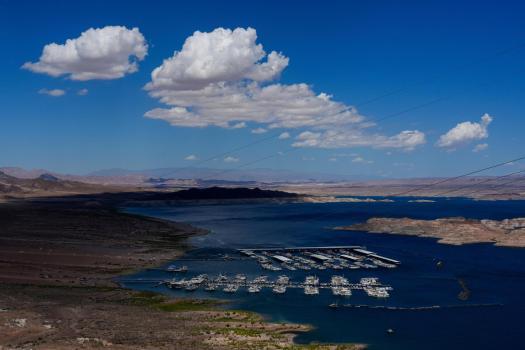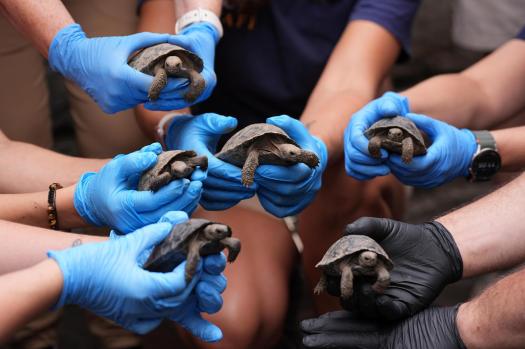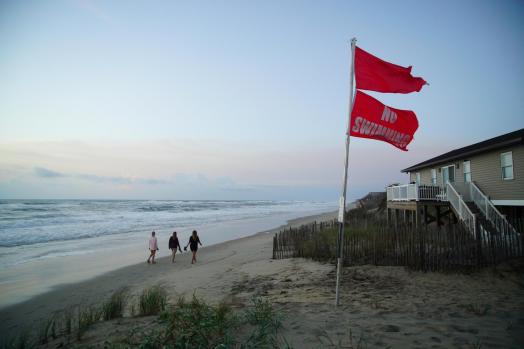By Associated Press’s Brittany Peterson
DENVER (AP) As drought persists in the West, federal officials said Friday that Arizona, Nevada, and Mexico will once more have to rely less on water from the Colorado River.
Thirty Native American tribes, two Mexican states, and seven U.S. states depend on the Colorado River for their survival. The reductions are predicated on estimates of levels in federal reservoirs, namely Lake Powell and Lake Mead, which are published by the U.S. Bureau of Reclamation each August.
Mexico will lose 5% of its whole Colorado River share, and Arizona will once more lose 18%. Nevada, which receives significantly less water than Arizona, California, or Mexico, will continue to see a 7% drop. Since California has senior water rights and is the last to lose during shortages, it won’t be subject to any cuts.
There is significantly greater demand for water than what actually flows through the river due to decades of abuse and the consequences of chronic drought made worse by climate change. Since 2022, Lake Mead’s low reservoir levels have led to mandated cutbacks annually; the most severe cuts occurred in 2023, primarily affecting Arizona farmers.
The states are attempting to agree on new long-term regulations to control the river during dry years by the end of next year. The Trump administration threatened federal intervention unless states reached a preliminary agreement by mid-November. States’ resistance to the amount of water they should individually give up has caused delays in the negotiations.
The amount of water used to calculate the initial Colorado River Compact in 1922 is not available in the current climate. After the necessary amount is transferred to the Lower Basin states of Nevada, Arizona, and California, the Upper Basin states of New Mexico, Colorado, Wyoming, and Utah are left to share much less water. Leaky infrastructure and evaporation also cause significant water loss.
Since all of the big users are reluctant to give up anything because they expect a drier future, fairly dividing the river’s water in the age of climate change has been frustrating for years. The reservoirs must have enough water to flow to the tunnels that carry water downstream, and ideally even more water for the production of hydropower. Important pieces of infrastructure, such as the Hoover Dam, depend on specific Lake Mead water levels to produce energy.
According to John Berggren, a regional policy manager at Western Resource Advocates, a nonprofit organization that focuses on climate change, mandatory cuts and emergency water releases are reactive.
“This new set of guidelines needs a lot of flexibility built in if we are going to be able to have a sustainable Colorado River and not just be responding to crisis after crisis,” he said.
We must and can perform better. According to Colorado’s commissioner on the Upper Colorado River Commission, Becky Mitchell, nature isn’t waiting for us.
The Lower Basin would get a specific percentage of the average natural flow from the previous few years under the so-called natural flow approach to river management that states are exploring.
By developing voluntary conservation strategies, the states in the Lower Basin have contributed to preventing more extensive cutbacks.
According to J.B. Hamby, chairman of the Colorado River Board of California and a board member for the Imperial Irrigation District, the river’s biggest water consumer, the river would be in terrible shape without all of those steps. However, he is aware that California, like other states, will probably have to make further concessions throughout the negotiations.
Numerous conservation initiatives for governments and tribes in the Upper Basin are in limbo. On his first day in office, President Donald Trump froze Inflation Reduction Act funding that had not yet been disbursed, including around $400 million for those projects. Earlier this month, the whole Colorado congressional delegation signed a letter calling for the release of their share of those funds.
The title in this item has been changed to no longer mention the third year of reduction. The cuts announced Friday would take effect in 2026, the fifth year.
This article was written by Mead Gruver of the Associated Press in Fort Collins, Colorado, and Amy Taxin of Tustin, California.
The Walton Family Foundation provides funding to the Associated Press to cover environmental and water policies. All content is entirely the AP’s responsibility. Please visit https://apnews.com/hub/climate-and-environment to view all of AP’s environmental coverage.












